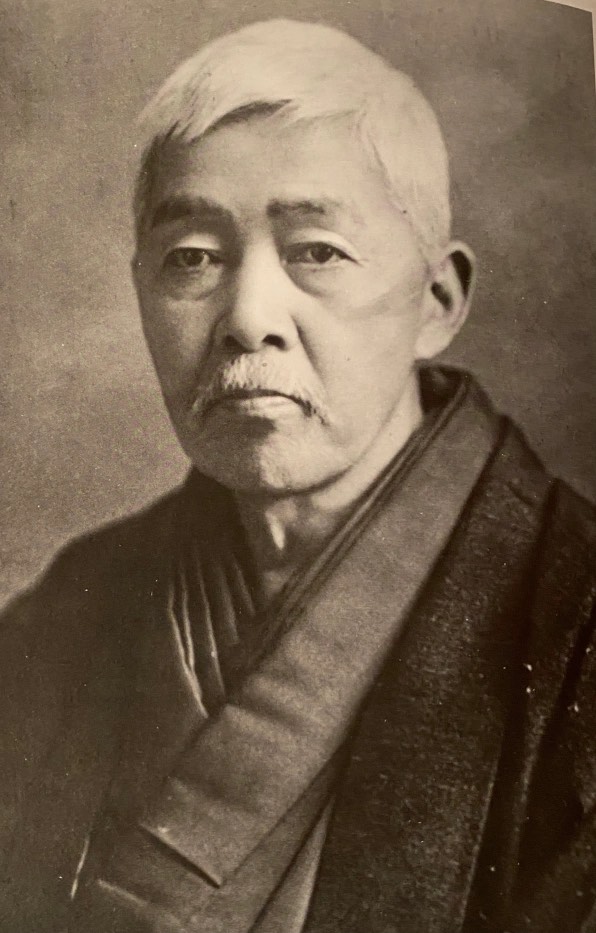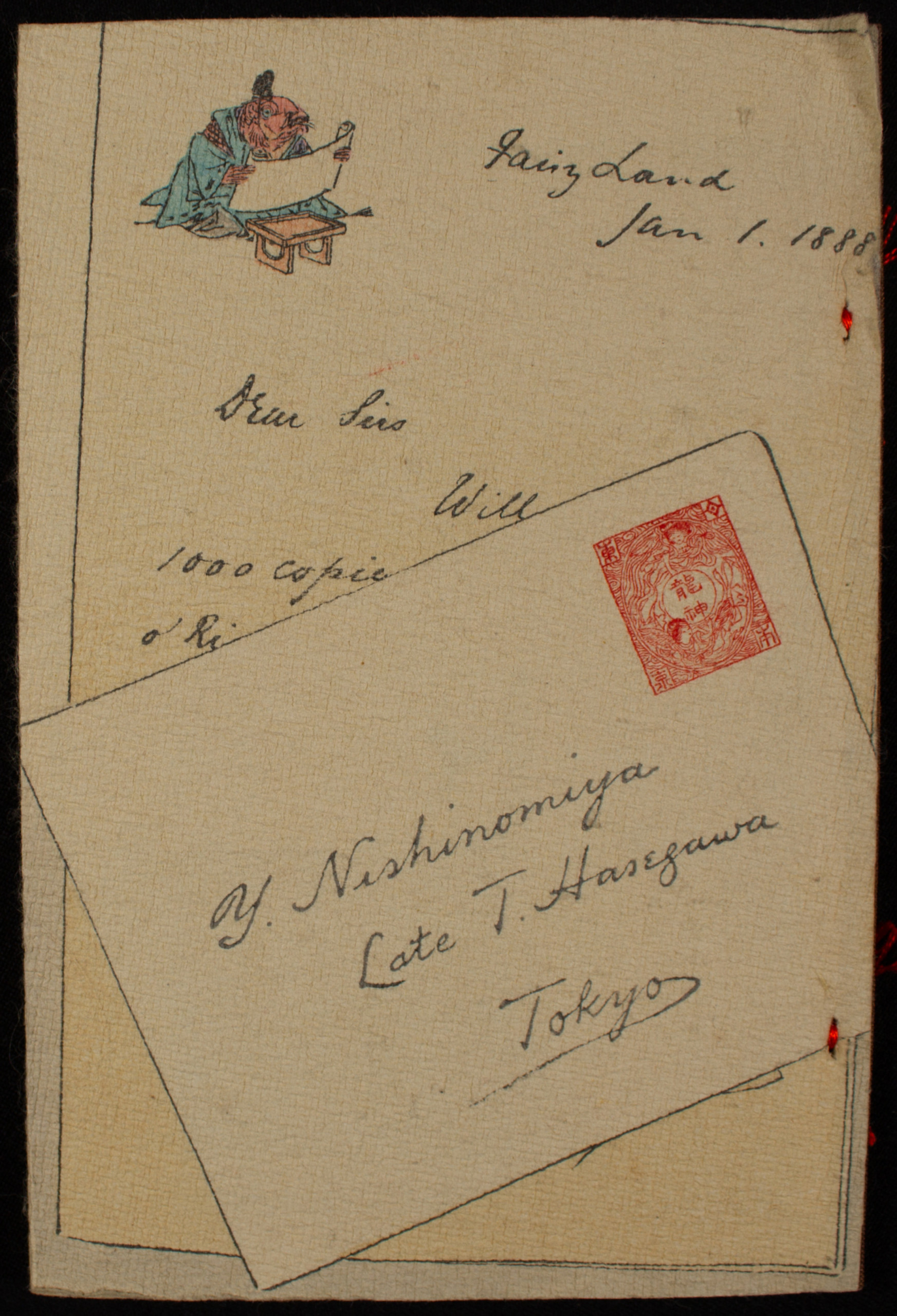Hasegawa Takejirō was born on October 8th, 1853. His childhood and teen years were spent in the company of the nearby Protestant missionary community learning English, creating life-long relationships, and laying the groundwork for what would be an incredibly successful and pioneering career in the publishing industry. At the age of 17 he could read English and was frequently visiting church, bringing his friends and family with him, eventually meeting his first wife (Sharf). At 24 they were married, and three years later Hasegawa was baptized by the Reverend David Thompson, further establishing his ties to the Christian community. Rev. Thompson would later go on to translate the first six installments of the Japanese Fairy-Tale series and was a key figure in establishing Christianity in Japan. He spent most of his literary career translating the Bible into Japanese. At the age of 22, Hasegawa briefly attended the Short-Term Commercial Training Institute located in Ginza. He also became involved in the family import business, possibly working directly with his older brother to publish maps and import textbooks (Sharf). In 1881, his first marriage ended, his Christian activities ceased, and Japan entered a recession. Despite these challenges, he kept his attention on maintaining the personal connections he had formed within the English community in Tokyo.
As early as 1884, Hasegawa began conducting business under the company name of Kōbunsha. He spent the next year transitioning from simply importing goods for the Japanese market to establishing the framework and infrastructure necessary to translate, illustrate, print, and sell his new Japanese Fairy-Tale Series. This required him to find suppliers for paper, letterpress, and woodblock printers and artists and submit copyrights on his stories before their final publication.
On August 17th, 1885, Hasegawa successfully copyrighted the first five stories, printing them initially in black and white on plain paper with a cardboard cover. He continued to expand his web of relationships and married Komiya Yasu, whose family contracted with his woodcutters and printers the same year. From the beginning, family was an essential connection to his work, providing him with the resources for his publishing and the drive to constantly evolve his business.
He quickly realized that the market of children’s books wasn’t niche enough to make enough of a profit. To remedy this, he switched to color printing and as he continued to add titles to his series he pioneered the use of chirimen-gami, or crepe-paper, as the primary medium for his books. The exact date of this development is unknown, but likely began with the 1888 publications of the Griffith, Farron, & Co. set of stories. While there are very few recollections of how he ran his business, it is clear that he was highly adaptable, extremely diligent, and eager to connect with his friends and colleagues. In letters between his colleagues Basil Hall Chamberlain and Lafcadio Hearn, Chamberlain describes the nature of his business practices: “He is not omnivorous. Only a single tale at a time is his view of things, each taking long to illustrate, and various other circumstances, as I know from experience, causing delay. The illustrations have generally been evolved gradually between him, the artist, and the writer” (Chamberlain, 137). He was quick to add new titles and modify existing ones, a strategy which proved to be highly successful.
The personal attention given to every step of his process is also seen in the few descriptions of his personal character. Hearn consistently describes him as a kind man, who despite the challenges associated with publishing, would adapt to the different abilities and needs of his customers. A family man, him and Yasu had six children, amd he would frequently mention his children in correspondence with others. His second son, Nishinomiya Yosaku, would end up joining him in 1914, working as both co-publisher and printer. Nishinomiya would end up taking over the business after Hasegawa’s passing on July 17, 1938 at age 84. A careful reading of the surviving first-hand accounts of Hasegawa’s business tactics reveal a man who not only knew how to navigate the challenges of the publishing and export market, but one who prioritized connecting and nurturing the relationships he had to those around him, regardless of their status and profession.

